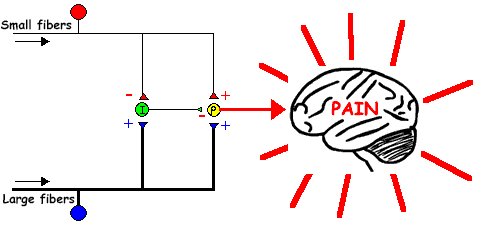A little neuro, anyone?
Welcome to Monday, and yes, it is a NEURO day. In fact, if you got up this morning, you too are having a NEURO day. Dr Allen thinks it’s all about the ORTHOPEDICS, but without NEURO, there would not be any orthopedics : )
A dialogue from one of our avid readers, Dr. Ryan.
Dr. Ryan: Hey Ivo,
“Your muscle system and nervous system relate to each other from within tiny muscle fibers called spindle cells, which monitor stretch. If your muscle is overloaded too rapidly, the spindle cells will temporarily inhibit the muscle. The next time you contract the muscle, it will fire again. Similarly, cells within your tendons called Golgi tendon organs also measure and monitor stretch. If your tendon is stretched too rapidly or exceeds its integrity, the Golgi tendon organs will temporarily inhibit the muscle. But the next time the muscle fires, it will again fire appropriately.
"But there’s a fail-safe system," Dr. Buhler explains. "It’s where the tendon attaches into the periosteum of the bone and the little fibers there are called Sharpey’s fibers. Those fibers are loaded with little receptors that monitor tension. And if the integrity of those fibers are exceeded, they inhibit the muscle, just like a circuit breaker would inhibit an electrical circuit.
Once that happens, the muscle will still fire under passive range of motion. But if you load the muscle, it gives way. If you continue to load the muscle, your body creates pain at the attachment points to protect you. What the central nervous system does at that point is compute an adaptive strategy by throwing stress into the muscle next to it. Other tissues begin to take on more of the load for the muscle that’s been injured.”
Here is a link to the entire article if you want to check it out:
Dr Ivo: Thanks Dr. Ryan.
Spindles monitor length and GTO’s monitor tension. My understanding is spindles, when activated, stimulate the alpha motor neuron(at the cord) and cause contraction of that muscle or motor unit. GTO’s, when activated, cause inhibition of the muscle they are associated with. I am not aware of them being inhibitory, only GTO’s. They are believed to be GABAnergic synapses. The impulse (at least in cats) can be smaller or inhibited if the muscle is held in contraction for an extended period of time (see attached)
Perhaps he is talking about spindle dysfunction, where the intrafusal portion of the spindle (which is innervated by a gamma motor neuron) is either excited or inhibited. The gamma’s are more of a slave to the interneuronal pool (in the cord), which would be the sum total of all excitatory and inhibitory input to that area (ie the central integrated state). This not only reflects local receptor input but also cortical information descending (from areas 4s and 6 in the precentral gyrus) AND descending information from the caudal reticular formation.
Based on what you sent, I do not agree with the 1st 2 sentences. I was not aware about increased receptor density of Sharpeys fibers. I did a quick search and found this: http://www.ncbi.nlm.nih.gov/pmc/articles/PMC2100202/ , which eludes to it and here: http://www.ncbi.nlm.nih.gov/pmc/articles/PMC3098959/. I will have to dive in more when I have time.
Not sure why O/I attachments are tender in inhibited muscles. I find them tender in most folks. Maybe because inhibited muscles ave altered receptor function and that preloads the nociceptive afferent pathway or at least that neuronal pool? Are they closer to threshold for some reason? Not sure. LMK what you find.
Thanks for getting me jazzed about sharpeys fibers!
for those of you who need to know YES, there will be a forthcoming Sharpeys fibers article
Dr. Ryan: That’s what I thought. Thanks for looking into it and I will check out those links. You have jazzed me plenty of times over the years. Glad I could jazz you up for a change. Have a great weekend.
Yes, Dr Ivo is definitely an uber neuro geek, especially when he spends time on the weekend talking about spindles!
all material copyright 2013 The Homunculus Group/ The Gait Guys. All rights reserved. Please as before you lift our stuff.





























